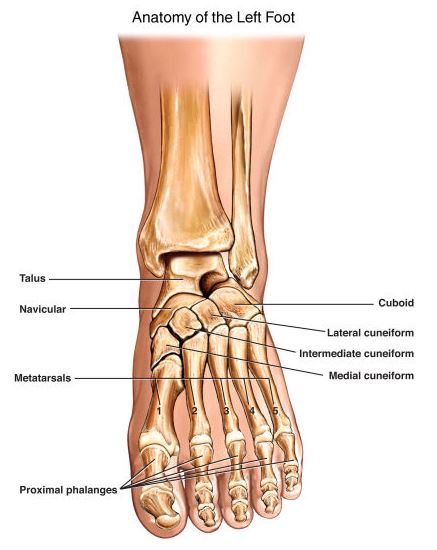4 Anatomy and Physiology of the Foot and Nail
Learning Outcomes
After completing this unit, the student will be able to:
- Define terms involved with foot care and movements of the foot
- Discuss anatomical antonyms as related to the lower leg
- Review the normal anatomy and physiology of the foot
- Recognize the normal foot
- Identify the parts and significance of the normal toe nail
Learning Activities
*In order to effectively understand the anatomy and biomechanics of the lower leg you will need to become knowledgeable about and familiar with the terms outlined in the text.
- Review the learning outcomes and courseware readings for this unit.
- Read the following pages/chapters in the text: foot care and anatomical glossary and anatomical antonyms.
- Review in the text the anatomy and physiology of the foot
- Review the additional teaching points related to footcare in the material provided.
- Review appropriate anatomy and physiology.
- Biomechanics of the foot: to better understand the biomechanics of the foot, study and become knowledgeable about the anatomical antonyms
- Practise the movements of the foot
Anatomy and Physiology of the Foot
Watching the 8 minute video embedded below, provides a solid overview of the anatomy of the foot. If you do not see the video below, access it at https://youtu.be/ROd1Acma64o
Vocabulary
Knowing the specialized vocabulary cold will assist. Take some time to learn the terms you will use in your foot care practice.
Amazing Anatomy’s Fascinating Facts
The foot and ankle contain:
- 26 bones – 1/4 of the bones in the human body are in the feet
- 33 joints
- more than 100 muscles, tendons (fibrous tissues that connect muscles to bones) and ligaments (fibrous tissues that connect bones to other bones); and a network of blood vessels, nerves, skin, and soft tissue
Bones of the Feet: Breakdown
It is important to know the bones’s normal shapes and positions as they form reference points for assessing and examining the foot.
The 26 bones of the feet are part of the three, main sections of the foot: forefoot, midfoot, and rearfoot.
 Forefoot
Forefoot
- metatarsal – 5 bones attach proximally to toes
- phalanges – 14 bones
- 1st toe | Hallux has 2 phalange bones
- 2nd – 5th toes have 3 bones each
- sesamoid bones – 2 cartilaginous nodules embedded in tendons on plantar surface of the head of the 1st metatarsal; help to deflect pressure from the joint when walking
Midfoot
- cuneiforms – 3 bones medial, mid and lateral
- note the location of the 1st through 3rd cuneiform in the diagram above
- cuboid – can dislocate
- navicular – can drop and cause arch pain in a fallen arch
Rearfoot
- talus – part of ankle joint
- calcaneous – heel bone
Anatomy Hand Out
Color Anatomy Charting Handout
Bones in the foot video
http://anatomyzone.com/tutorials/musculoskeletal/bones-of-the-foot/
Bones in the foot flash cards
http://anatomyzone.com/flashcards/lower-limb/bones/bones-of-the-foot/
Nail Anatomy

